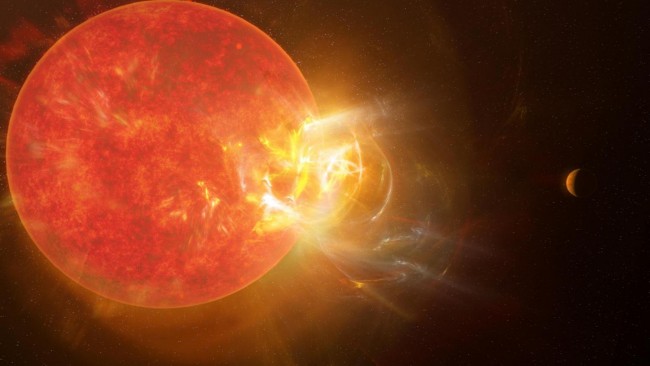Massive solar storm could hit Earth in days and impact power grids, communications
Solar flares, also known as coronal mass ejections (CMEs), can cause storms when they hit our planet's magnetic field
The sun has reportedly ejected a large mass of particles that space weather experts believe could hit Earth in the next couple of days.
Solar flares, also known as coronal mass ejections (CMEs), can cause storms when they hit our planet's magnetic field. A CME is a massive expulsion of plasma from the Sun's outer layer called the corona. While such ejections can travel through space and hit Earth, the solar storm predicted for this Wednesday, March 23, is likely to be a "G1 minor,” meaning we probably won’t notice it even if it happens.
“Another CME is heading for Earth, and it’s a little off target," according to experts at Spaceweather.com. “A glancing blow (or near miss) is possible during the late hours of March 23rd, according to NOAA forecasters. This will be the 3rd time in the past week that a CME has almost landed a direct hit. Even a near miss can produce bright Arctic auroras. Best case scenario for auroraphiles: A minor G1-class geomagnetic storm.”
The "G1 minor" category of solar storms has the potential to cause power grid fluctuations and have a relatively small impact on satellite communications. According to The Sun, a G1 storm can also confuse migrating animals that depend on the Earth's unique magnetic field for a sense of direction. However, the good news is that such solar storms can produce stunning natural light displays like the northern lights. These auroras are formed when the Earth’s magnetosphere is bombarded by solar winds and creates celestial green and blue light shows.
David Wallace, Assistant Clinical Professor of Electrical Engineering at the Mississippi State University, explained in an article on The Conversation how the plasma of a CME consists of a "cloud of protons and electrons, which are electrically charged particles." Wallace continued, "When these particles reach the Earth, they interact with the magnetic field that surrounds the planet. This interaction causes the magnetic field to distort and weaken, which in turn leads to the strange behavior of the aurora borealis and other natural phenomena."
It's worth noting that the Earth's magnetic field protects us from devastating consequences of solar flares. As recorded by The Sun, a 1989 solar eruption caused the Canadian province of Quebec to lose power for over nine hours. Aside from electrical failures, communications would also be disrupted on a global scale. "Internet service providers could go down, which in turn would take out the ability of different systems to communicate with each other," Wallace explained. "High-frequency communication systems such as ground-to-air, shortwave and ship-to-shore radio would be disrupted. Satellites in orbit around the Earth could be damaged by induced currents from the geomagnetic storm burning out their circuit boards. This would lead to disruptions in satellite-based telephone, internet, radio and television," he added.
Furthermore, an increase in solar activity due to geomagnetic storms hitting the Earth causes the atmosphere to expand outward, thereby changing the density of the atmosphere where satellites are orbiting. Fluctuations in density can create drag on a satellite, thereby slowing it down. In such cases, they must be maneuvered to a higher orbit or risk falling back to Earth. That said, the sun is currently at the start of a new 11-year solar cycle that is expected to have more intense and extreme eruptions.
 A coronal mass ejection (pictured) is a massive expulsion of plasma from the Sun's outer layer called the corona
A coronal mass ejection (pictured) is a massive expulsion of plasma from the Sun's outer layer called the corona
No comments:
Post a Comment